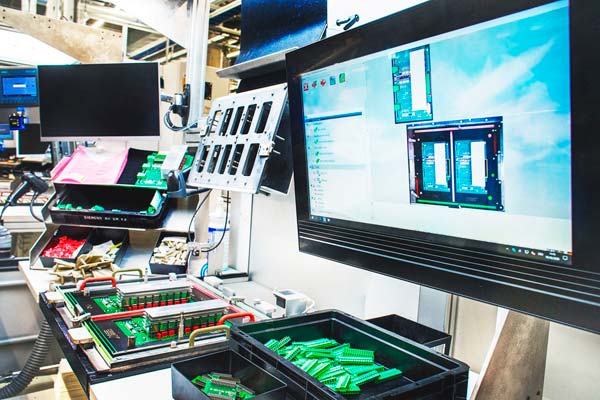 Even before Corona, manufacturers of assistance systems noticed a growing interest in digital solutions to support manual assembly and production in manufacturing companies. Numerous systems are available on the market, but due to the upcoming challenges of industrial production, investments in such solutions must be made with foresight.
Even before Corona, manufacturers of assistance systems noticed a growing interest in digital solutions to support manual assembly and production in manufacturing companies. Numerous systems are available on the market, but due to the upcoming challenges of industrial production, investments in such solutions must be made with foresight.
“Due to the Corona crisis, we assume that production operations and supply chains will be increasingly located in Europe again, especially in Germany. That means that the processing stages must be carried out at the highest possible level of efficiency, with a below-average error rate, otherwise manual production will become too cost-intensive. Furthermore, employees need to be trained quickly and efficiently for new assembly steps, especially in view of decreasing batch sizes, higher product diversity and changing product options, which often means that very different assemblies and product parts have to be assembled,” explains Wolfgang Mahanty, managing partner of Optimum datamangement solutions GmbH. Optimum develops and manufactures the assistance system Smart Klaus, which supports these developments with intelligent solutions. According to Mahanty, Smart Klaus is used when high quality requirements, changing product variants with cost-intensive, manual production steps are produced, when there is a documentation obligation and the necessary skilled workers are not available on the job market. “In such cases, assistance systems such as Smart Klaus have to take the responsibility to enable the employee to work without stress”, says Mahanty.
With the expected challenges in industrial assembly, choosing the right assistance system is crucial. “From our point of view, an assistance system will have to fulfill the following tasks in the future: it must direct the employee step by step in the execution of the task, check the performance rendered, confirm the accuracy and document the entire process. To do this, such a system must train the employee and explain work processes clearly and simply,” Mahanty continues. In addition, all non-value-adding activities, such as scanning barcodes or pressing confirmation buttons, are eliminated and result in time savings and increased productivity.
The easiest assistance system is to describe the work using a video or PowerPoint presentation, which is played on a monitor at the workstation. While the individual work steps are explained, there is no examination or documentation of the work performed. Pick-by- or Pick-to-Light systems show the employee which container to use. However, if the wrong component is in this container, the employee does everything correctly and yet in the end the product is wrong. Moreover, the human factor remains a source of error. In most cases, the confirmation of the completed work step is carried out by the employee himself by pressing a button. The system can neither check nor document the extent to which the correct component was actually processed. Unless it has an additional intervention control. The situation is similar when using data glasses, where work steps and instructions are displayed to the employee via glasses. Although sensors track individual work processes here, final confirmation of the assembly work is also done manually. The same applies to the use of projectors, which project the individual work steps onto a work surface. Though the system also records the hand movements, the final confirmation is usually done manually. Documentation does not take place in all systems, making traceability impossible.
This is different when using Augmented Reality in combination with a 2D camera system. Smart Klaus of Optimum GmbH is such a system which is used in manual production as a cognitive assistance system directly at the workstation and takes on the leadership and simultaneous quality assurance of the individual assembly steps in real time. The system guides the assembly workers step by step through the work process and simultaneously checks that no errors occur. The employees can work without stress and learn new assembly tasks quickly and safely. “The software shows the employee the subsequent work steps in detail. On the screen he can see where which component is to be placed in the manual assembly process. The camera, which is mounted above the workstation, detects these work steps and checks the correct placement and sequence. If components are placed incorrectly or are missing, the system draws attention to this by using an audiovisual notice. If all work steps have been carried out correctly, this is also clearly indicated to the employee by a positive audio-visual signal. The audio signals do not distract the employee from the actual work,” Mahanty says. This means that only correctly assembled assemblies reach customers. The camera also documents all the process steps that have been carried out so that they can be traced. If work instructions change, these can be easily transferred to the system, so that design or product changes can be quickly communicated to the assembly employee. “Work assignments can also be shifted back and forth between workstations or even international locations, thus achieving a high degree of flexibility. In the event of illness of individual employees or during workload peaks, production times and volumes can thus be secured. This flexibility and the associated error minimization, efficiency increase and process documentation are necessary to meet future production challenges,” Mahanty says.
OPTIMUM datamanagement solutions GmbH


